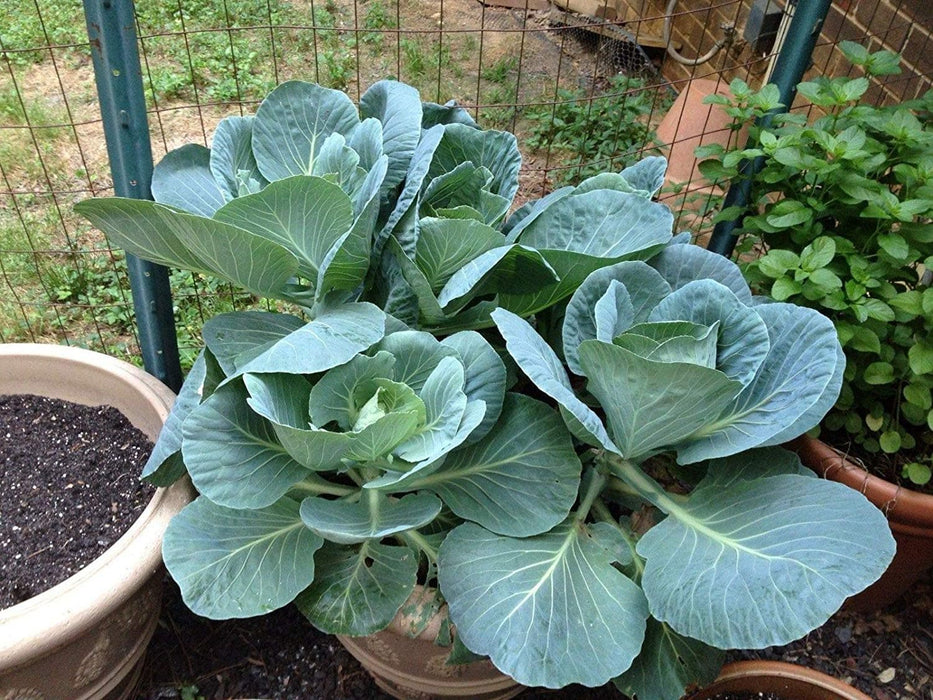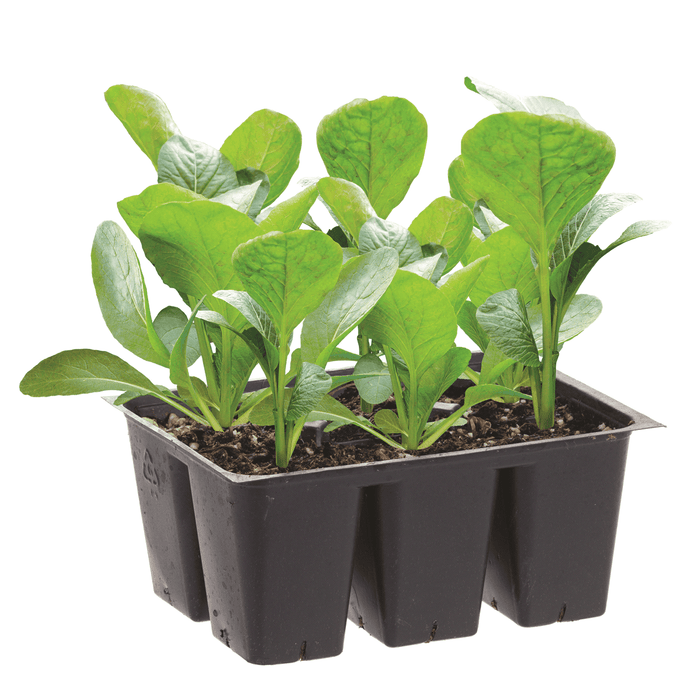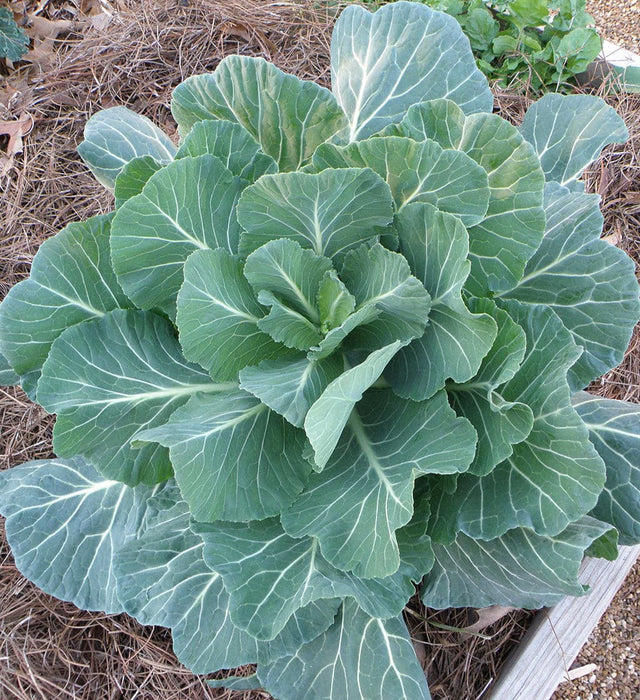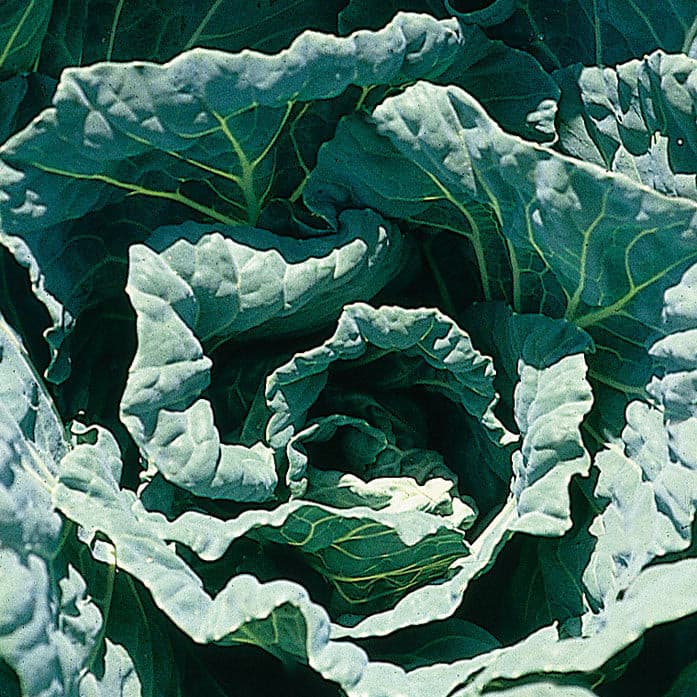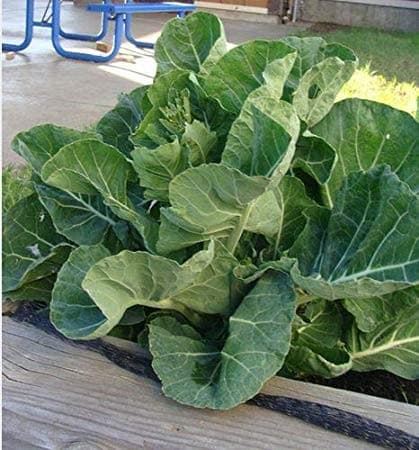
COLLARD GREENS Seeds, Morris Heading, PERENNIAL VEGETABLE
Most orders are processed by the next day
Select your desired size and/or color from the available options.
Very cold tolerant and can be planted in fall as well as spring.
75-85 days. Morris Heading Collard seeds grow slightly crumpled and loose heads. These compact Collard plants have short steamed leaves, and are tolerant to both the heat and the cold. Morris Heading Collard is very rich in vitamins and minerals. The juicy collard leaves have a mild cabbage-like flavor and are delicious boiled, steamed, or as an addition to salads. Plants grow to be up to 36 inches tall.
Product Details
- Zones: 3-9
- Planting Depth: 1/4" inch
- Spacing: 8-12" inches between plants; 18-24" inches between rows
- Sun/Shade: Partial Sun
- Germination: 5-10 days
- Days to Maturity: 60 days
- Plant Height: 24-36" inches
-
Growing Directions:
The Morris Heading Collard seeds can be both sown indoors and outdoors, depending on the climate of the area. For direct outdoor sowing, sow the Morris Heading seeds between three and four weeks before the final frost of the season.
-
For the best results, provide the collard seeds with soil that has a pH between 6 and 6.5. The collard plants will thrive in full sun, and must be watered consistently, about an inch or two each week, so that they do not dry out. When growing these collard plants, be sure to keep the plants themselves dry, as wet leaves are most prone to disease. Water them near the soil, or early in the day.
-
These collard greens will be ready to be harvested after 75 to 85 days. When you are ready to harvest your Morris Heading plants, take each leaf off of the plant individually, or harvest the entire plant at once. Leaving the bottom of the collard plant will allow the leaves to continue to grow.
-
Collards prefer a fertile, well-drained soil high in organic matter with a pH range of 6.0–7.5. Consistent moisture will produce the best quality leaves. In the South, collards are best for fall, winter, and early spring harvests, to avoid the temperature extremes of midsummer — even though they will tolerate some measure of heat. Because collards are very cold tolerant, they also do well in the North, where their flavor is enhanced by frost and cold weather.
-
DIRECT SEEDING:Plant from early spring to approximately 3 months before expected fall frost. For bunching, sow 3–4 seeds every 12-18", ½" deep, in rows 18–36" apart. Thin to 1 plant per group. For baby leaf production, sow 60 seeds per foot in a 2–4" wide band ¼–½" deep.
-
EARLY SPRING CROP:Sow 2 seeds per cell in 50- to 72-cell plug flats, 3–4 seeds/in. in 20 row flats, or in outdoor beds ¼" deep. Seedlings should be ready to transplant in 4-6 weeks. If possible keep soil temperature over 75°F (24°C) until germination, then reduce air temperature to about 60°F (16°C). Transplant outdoors 12–18" apart in rows 18–36" apart. Collards prefer cooler growing temperatures, between 55–75°F (13–24°C), optimum being 60–70°F (16–21°C), but will produce good crops under warmer, summer conditions.
-
FALL CROP:Start seedlings as above in May and transplant to the garden in June–July. To ensure mature heads, seed the crop early in areas where heavy freezes occur early in fall.
- WINTER CROP:Successful collards crops can be grown where winters are mild (temperatures rarely below 32°F (0°C)). Transplants can be set out from September to February in these regions
LET OUR CUSTOMER SPEAK FOR US

![[Seeds] - Caribbeangardenseed](http://caribbeangardenseed.com/cdn/shop/files/gift-card-gift-card-1_1024x1024_dfa857db-9150-4315-a362-7f0bb3fb9c47_60x28.png?v=1703978838)


